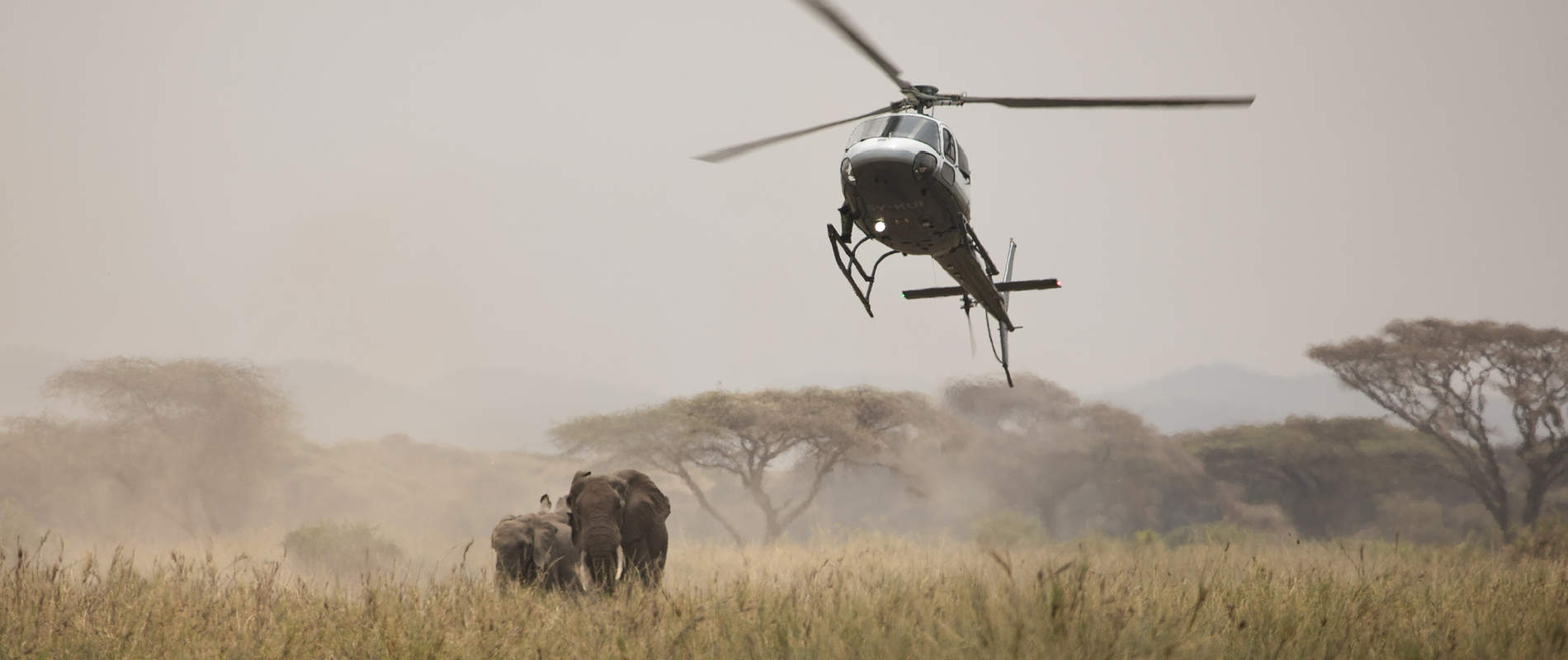Bullets, snares, arrows — elephants face assaults from all angles. This time, it was a spear.

Last week, a speared bull was reported in the heart of Kimana Sanctuary. MCWT made the initial sighting. After intense foot patrols, Big Life successfully located him a few days later. He had been struck on his front left leg, leaving a grave injury that was pumping blood.

As soon as the bull’s coordinates were confirmed, we mobilised a treatment. The SWT/KWS Tsavo Mobile Veterinary Unit drove to the scene, while the SWT helicopter was deployed from our Kaluku Field Headquarters.

After Dr Limo darted the patient from the air, the helicopter gently shepherded him away from his companions. By a stroke of luck, the bull went down in an open area, allowing treatment to commence.

The spear had nicked a vein, causing blood to course out of the entry wound. Left untended, it could have turned into a lethal situation — but fortunately, the team intervened in time. They were able to stabilise the injury and stop the bleeding. Once the wound had been thoroughly treated, the bull was revived and lumbered off to re-join his friends. Dr Limo is optimistic that he will make a full recovery.

This bull was likely a victim of human-wildlife conflict, which is one of the greatest threats facing elephants today. As habitats shrink and the human footprints expands, wildlife and people increasingly come into contact. That ramps up during the dry season and drought, when competition over resources is high. Elephants increasingly venture onto community land in search of food and water, which often escalates to a conflict situation.

In collaboration with field partners, we are working to find a way forward for wildlife and the people who live alongside them. This takes many forms, from fencelines that serve as ‘wild borders’ to rapid ground-and-aerial intervention when elephants venture onto community land. We are deeply grateful for your donations, which make these solutions possible.
